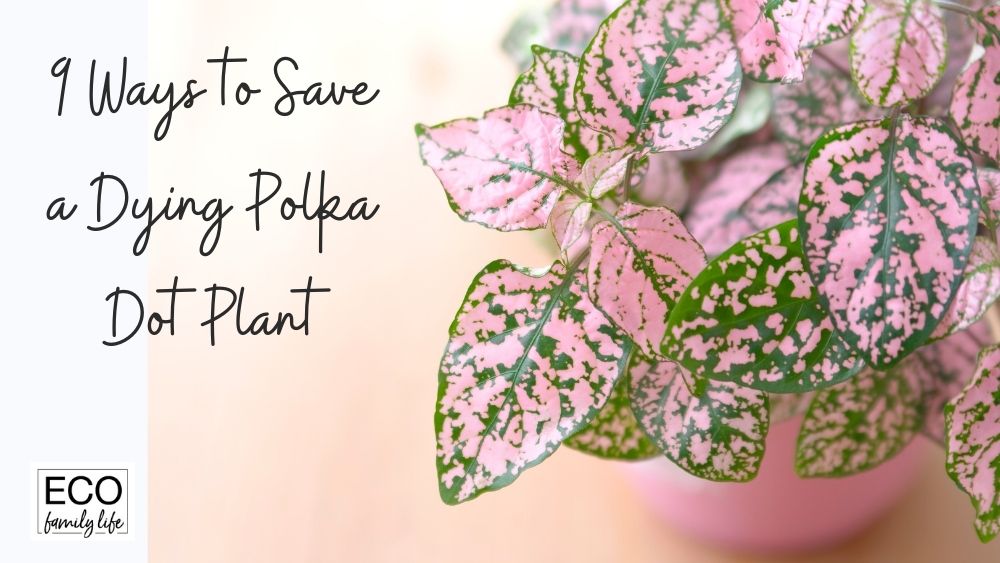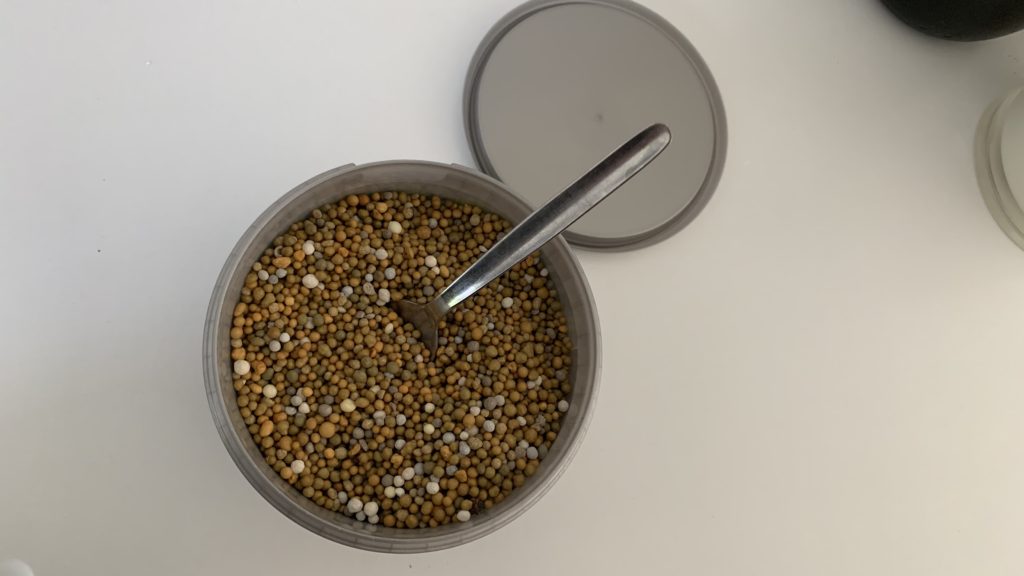Polka dot plants are gorgeous and make the perfect indoor plants, thanks to their beautiful, colorful patterns. With a bushy appearance and leaves that have dots all over them, they are an easy plant to grow outdoors or indoors.
Just like other plants, things can go wrong. If your polka dot plant starts to die, it is usually due to underwatering or overwatering, too much or too little light, using hard water to water the plant, or using too much fertilizer.
The good news is, it’s super-easy to remedy the situation. Here are the top causes and solutions for polka dot plants dying.

1. Underwatering or Overwatering
If the leaves start to turn brown on your polka dot plant the plant, signaling that it’s dying, it might be the way you’re watering it. Polka dot plants need moist soil to grow properly, but too much water can reduce the oxygen levels in the soil, wash away nutrients and cause fungal root rot.
If the soil feels wet or is growing mold on the surface then it is likely that the plant is overwatered. It is usually best to repot the plant into fresh potting soil to help it recover. Only water the plant when the soil feels dry 1-2 inches below the surface
The leaves on this plant will turn brown before yellowing then it is likely that the plant is underwatered. Polka dot plants that are left to dry out, will die rapidly if they are not watered.
Test the soil with your finger to see if it is too moist or wet. If the soil is too dry, deep water the plant. Add a dash of seaweed solution to your watering can to help the roots to recover. If the soil is very dry, submerge the pot in a bucket of water for a few minutes.
Always let the pot drain thoroughly before returning it to the pot tray so that it does not sit in water.
2. Too Much or Too Little Light
Light is important when growing any plant, but polka dot plants need bright indirect sunlight, which means no direct sun. If you keep your plant roughly 2-3 feet away from a window, it should receive the right amount of light and warmth to grow properly without scorching the plant and causing it to die.
Never place the plant right next to a window or anywhere else that receives direct sunlight from the outdoors. Direct sunlight can burn the leaves of the plant turning them brown and eventually killing the plant.
3. Using Hard Water to Water the Plant
Watering your polka dot plant is important, but some tap water can contain concentrated amounts of minerals which can upset the balance for the plant. Hard tap water can quickly turn the leaves on your polka dot plant brown.
This is more common for indoor plants that are completely reliant on you for watering. If you suspect this is the case, use rainwater or distilled water for 3-4 weeks to see if the plant recovers.
Repotting the plant is often beneficial if you have been watering it for a long time with hard water. This will refresh the putting soil, balance out the minerals and nutrients and add back organic matter to support root growth.
4. Using Too Much Fertilizer
A good fertilizer can help a polka dot plant grow and thrive, but too much fertilizer will lead to browning of the plants’ leaves. Pay attention to your location and the instructions on the fertilizer’s packaging.
Never fertilize the plant more often than recommended in the instructions. If you recently fertilized the plant and now notice your leaves turning brown, try flushing out the soil with lots of water so the excess salt deposits can wash away.

Besides browning leaves, other issues can occur with polka dot plants. Here are a few of those issues and some remedies that will help.
5. Crispy Leaves: Low Humidity Levels
If the room where your plants are kept is too dry, the leaves of your polka dot plants can become crispy and brittle. To remedy this, increase the moisture in the air by installing a humidifier, spraying the plants regularly with water, or keeping a bowl filled with water near the plant, which automatically raises the humidity to an appropriate level.
6. Yellow Leaves: Overwatering the Plant
Your leaves will turn yellow and eventually fall off if you overwater your polka dot plant. Waterlogged plants can also mean other problems later on, including powdery mildew and root rot.
These are serious and can kill your plant, so as soon as you notice the leaves are turning yellow, immediately reduce the amount of water you give it. Make sure you’re using potting soil that drains well and a pot with drainage holes in it.
7. Fading Colors: Too Much Direct Sunlight
One of the things people love about polka dot plants is the colorful beauty and cute leaf patterns. When those gorgeous colors start fading, it could be because you’re giving it direct sunlight.
Polka dot plants need indirect sunlight so keep them about 2-3 feet away from a west-facing window. This will give the plant the right amount and the right type of sunlight for it to grow lush and colorful.
8. Fuzzy Plants: No Need to Panic!
It can be a little worrisome to look at your polka dot plants one day and notice funny-looking white hairs or outgrowths on them. It’s also natural to assume that this is some type of fungal infection, but in reality there’s no need to panic.
When you see these, just know that they are called trichomes which are there to reduce evaporation of water from the plant. They also help reduce the number of insect pests found on the plant, so you can just leave them alone and let them take care of your plant.
9. Leggy or Thinned Out Plants: Too Little Light/Wrong Soil Temperature
When polka dot plants start to get “leggy,” it means they aren’t getting enough light or the soil temperature is too cool or too warm. Ideally, your soil temperature should be 65-80 degrees Fahrenheit, and it’s easy to check the temperature at any time.
To get rid of legginess, wait until the soil temperature is within the normal range and cut back the plant to a node or two. Once it starts growing again, it will grow nice and bushy and not tall and leggy.
For more on growing polka dot plants, check out this video below.
Conclusion
Polka dot plants make great indoor plants but sometimes present challenges when grown that way. Browning leaves, yellow leaves, and brittle leaves are just a handful of things that can go wrong when you grow this plant, but the good news is that these problems and others are much easier to remedy than most people realize.
Paying attention to the amount of water, sunlight, and fertilizer you give the plants is the first step to preventing these problems because it is relatively easy to keep them healthy.
Happy growing.
I am an accredited practicing dietitian, experienced gardener and a dedicated cook. I love writing and sharing my experience so you can learn from my successes and mistakes.
